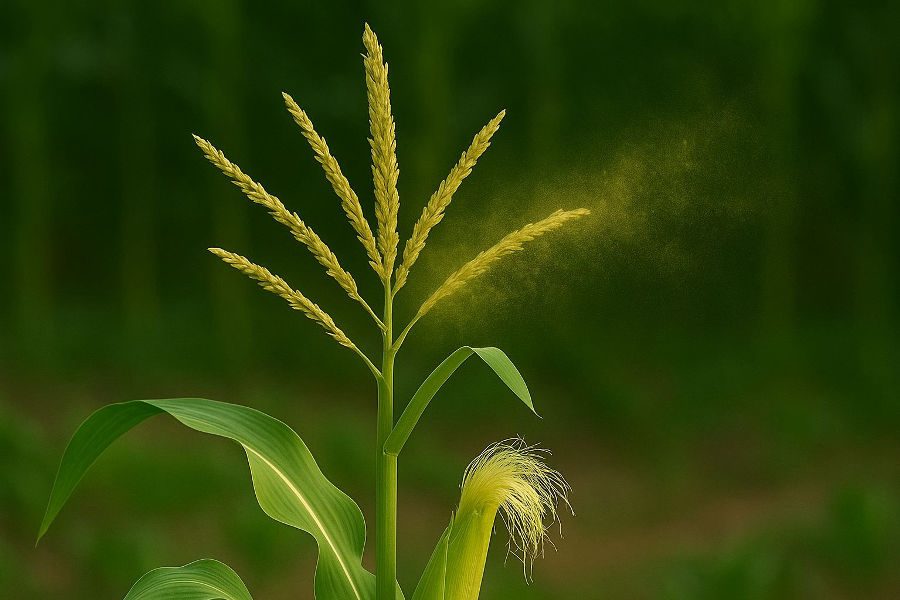Pollination in maize
Pollination in maize is a natural process where wind helps transfer pollen from the tassel to the silk. Each silk must receive pollen to form a grain, and this directly affects yield. Here’s how the process happens step by step:
1. Male and female flowers
Maize has both male and female flowers on the same plant. The tassel at the top produces pollen, while the ear with silks grows on the side of the plant. Each silk is connected to one ovule that can become a kernel.
2. Pollen release
The tassel sheds millions of pollen grains, usually in the morning and evening, for about 5–8 days. Pollen is very light and easily carried by wind.
3. Wind pollination
Wind carries pollen grains from the tassel to the silks. Since most pollen falls within 10–15 meters, maize should be planted in blocks (not single rows) for better pollination.
4. Silk emergence
Silks appear from the cob about 2–3 days after pollen shedding starts. Each silk remains receptive for 7–10 days and has a sticky surface that captures pollen grains.
5. Germination on silk
When pollen lands on a silk, it germinates and grows a pollen tube that travels down the silk toward the ovule.
6. Fertilization
Fertilization happens when the male cell from the pollen fuses with the egg cell inside the ovule. This forms a kernel.
7. Kernel formation
Each fertilized silk develops into one kernel. If a silk does not get pollen, that spot on the cob stays empty.
